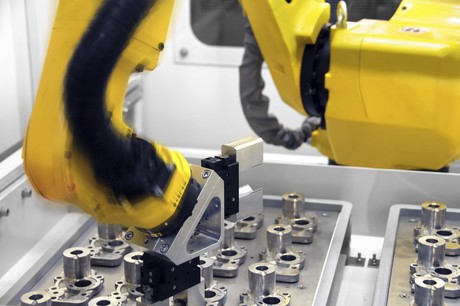The digital transformation of Australian industry

In the world of process control, we are seeing tremendous advances in technology ranging from smart devices through to process control analysis tools that promise to optimise the efficiency of our industrial sites. Many claim to lower costs and deliver higher end performance solutions. It seems that a large number of the major companies that I talk to are putting their digitisation plans into play. But will digitisation really deliver what we expect? Or are we simply catering to the whims of process engineers who crave the latest and greatest technology, in the same way that we all ‘just have to have’ the latest smartphone?
It often seems to me that we are rapidly losing our ability to keep up with the massive amounts of data being processed in Australian manufacturing plants. One of the biggest challenges is managing the data and analysing it so that we can work out trends in our performance and make continuous improvements. Rather than holding back on new technologies, embracing them is seen as the way to harness this information and do something useful with it.
Digitisation has only just begun to transform Australian industry, but the pace of change is dramatic, to say the least. Although challenging, it is an exciting time for Australia as opportunities open up to enhance our competitiveness and improve our cost base. We are using more and more ‘smart’ instrumentation, actuation devices, valves and process equipment to provide advanced diagnostics and control as well as real-time knowledge of what’s happening in our plants at any given time, even remotely from anywhere in the world. Standard global protocols are helping us to ensure that we can communicate with our equipment in a common way.
Hardware devices are getting smarter, but they are only one small piece of the puzzle. Harmonising process devices across the plant, through software that can tune equipment to work together in its respective loops while identifying the troublemakers and bottlenecks, is a great step forward. In this way we can empower optimisation teams to focus on those areas that provide the fastest and most cost-effective benefit to us.
Creating the culture for our employees to operate in this new world is also complex. It is important to challenge our people when we forge ahead with digitisation. To be successful, it must become embedded in our business culture and form a part of the mindset of our management — developing our staff and providing them with new leadership skills. Having a well-trained and motivated workforce is a key asset in such a rapidly changing environment.
Safety and plant up-times are benefiting greatly from these new technologies. We are already beyond preventive maintenance and well into understanding predictive maintenance of plant using the concepts of intelligent maintenance. Improvements in uptime using predictive diagnostics and increasing our productivity can realise substantial cost savings.
Digitisation is an area that most complex industries such as oil and gas are likely to invest in. This creates tremendous opportunity for Australian business. We have entered the era where we know that there will be future jobs that haven’t been invented yet. Far from being a cost burden to business, it seems that digitisation and new technology opens the door to significant improvements across our industry. There is no doubt that the impact of sophisticated systems is being seen in a very positive way on the bottom lines of many Australian businesses.
By 2020 it is predicted that over 30 billion devices or more will be connected to the Industrial Internet of Things. This is leading us to the ability to connect ourselves to the whole world around us in many different ways. As we develop our digitisation plans we move to a level of systems capable of self-optimisation and self-analysis. Such systems will self-adjust to improve, and will even be capable of managing their own energy demands and adjusting to different external environmental conditions.
While success with digitisation is greatly dependent on our ability to connect simply and securely, the cost advantages and opportunities created are too powerful to ignore.
A process of evolution: creating an adaptive future for the industrial workforce
As industrial automation systems grow more sophisticated, technology is being called upon to...
Microgrids: moving towards climate change resilience
The benefits of microgrids go far beyond support during a natural disaster and can provide...
Good for today, ready for tomorrow: how the DCS is adapting to meet changing needs
The future DCS will be modular and offer a more digital experience with another level of...









